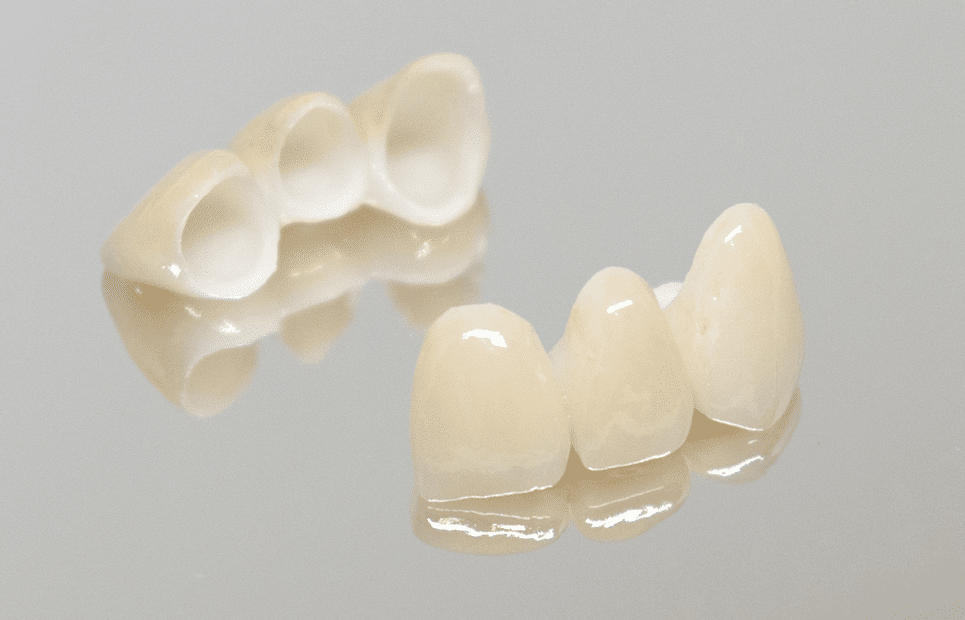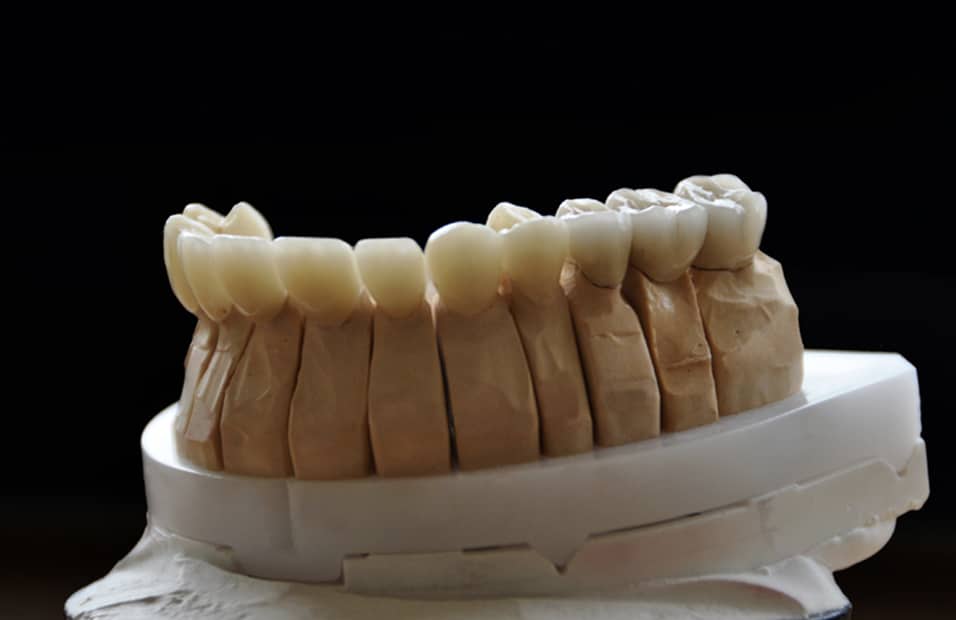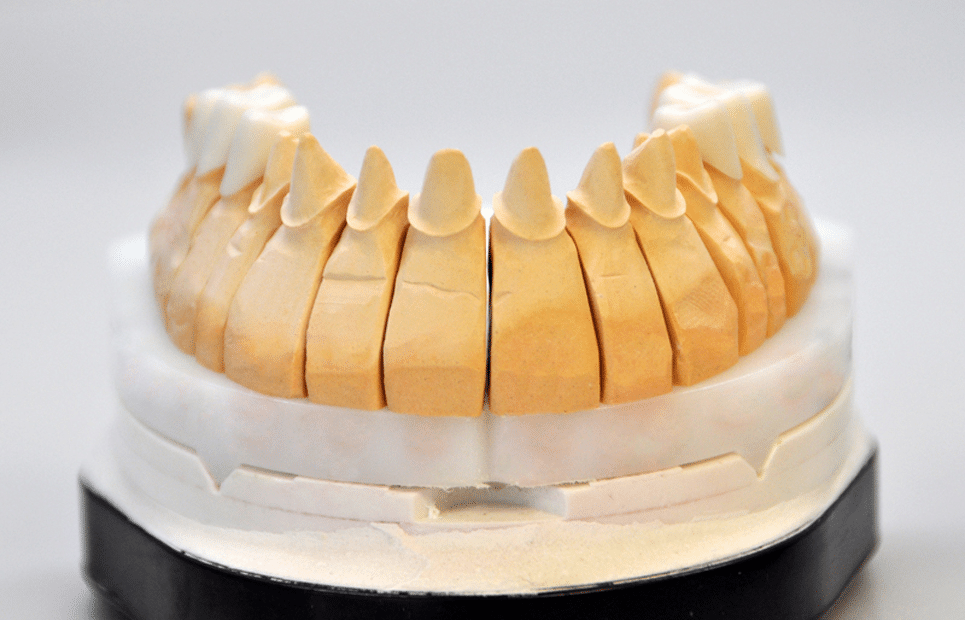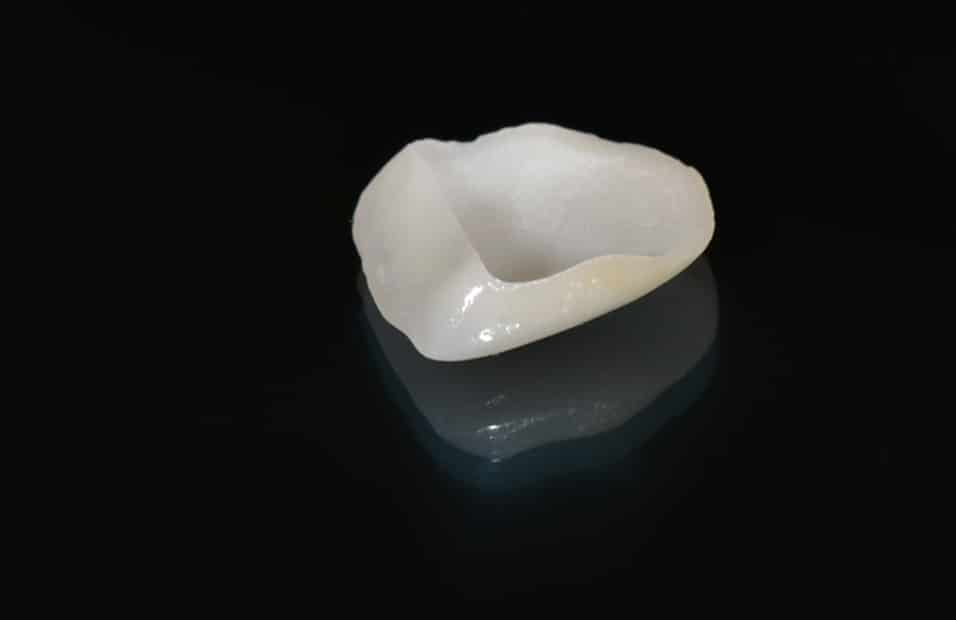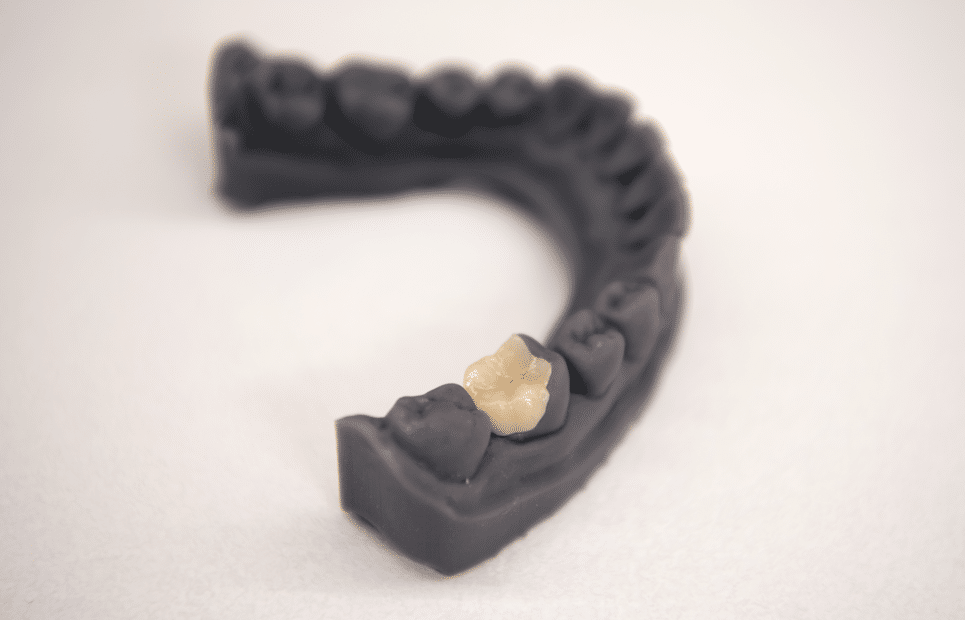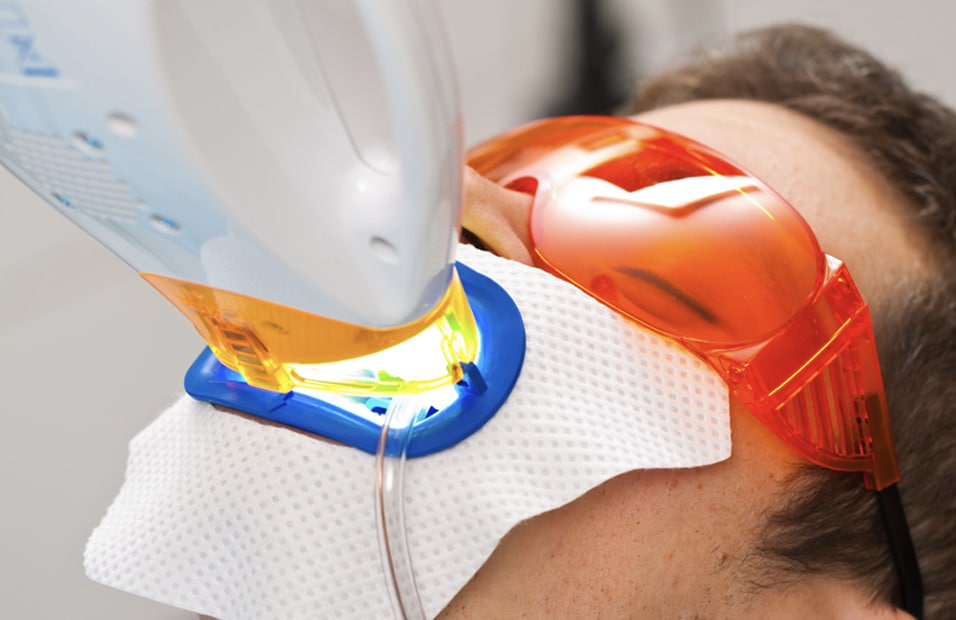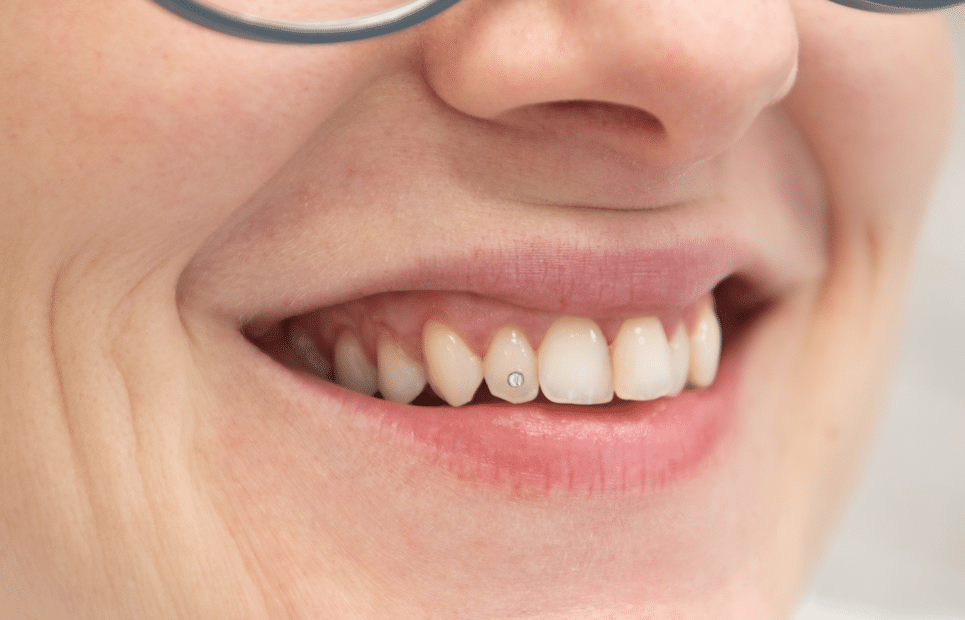Zirconium and e.max press ceramic crowns
If the tooth is decayed or fractured too badly to be repaired with fillings or inlays, or if the tooth needs to be a pillar for a bridge, a crown must be made for the tooth. The zirconium and e.max press ceramic crowns represent the highest aesthetic level, they surpass the ceramic fused to metal crowns in this aspect – they allow the light to pass through them in a similar way to natural teeth and there is no metal in contact with the gingiva. This crown type is the most demanded by our patients, due to its aesthetic properties. It can also be safely used for patients who suffer from metal allergies. They are made mostly for teeth in the anterior region due to their natural light-reflecting abilities, but for their resistance and biocompatibility they are also asked for teeth in the molar region. While e.max pressed ceramic crowns are molded under great pressure, the zirconia crowns are milled by a computer. E.max is slightly more aesthetic, while zirconia is more durable, so the type of the full ceramic crown will be chosen by the patient and dentist together, based on patient needs and habits.
Porcelain fused to metal crowns
The ceramic (porcelain) fused to metal crown is a relatively cheap, aesthetic and resilient type, therefore these types of crowns are used for crown preparations in the back region, on molar teeth. Although more and more patients opt for zirconium crowns, porcelain fused to metal crowns are still a very viable option. The picture shows the difference between a zirconium and a porcelain-fused-to-metal crown: metal-free zirconium crowns on the front teeth naturally transmit light through the crowns - this is no longer the case with the posterior ones, as there is a metal frame under the porcelain. We have eliminated the metal alloys containing nickel, and using cobalt-chrome alloys instead, eliminating possible allergic reactions that might occur with alloys containing nickel. For the maximal aesthetic effect, instead of the usual metal margin our technicians cover this part with special shoulder-ceramic, to prevent the appearance of the unpleasant "gray gingiva" effect.
Shoulder tooth preparation
To make room for the crown, 1-2 mm of the tooth enamel must be removed – this is made under local anesthesia, being a totally painless procedure. The teeth are prepared in the currently best technique available, according to the international professional literature, with the making of a shoulder – thus the margins of the crown will not end in a thin metal margin cutting into the gingiva and retaining food, causing caries of the tooth, but the crown will fit perfectly into the shoulder, being in the same level as the tooth surface – providing cleanability and a gingiva free of inflamation. This insures the longevity of the restoration and the health of the underlying teeth.
Ceramic veneers
The thin ceramic veneers are bonded to the front teeth, for aesthetic reasons, to improve mild discolorations and deviations in form. Usually 0,5 mm of enamel must be removed from the surface of the teeth to make room for the veneer, but in some cases these can be glued to the surface of the enamel without preparation.
Inlays
The inlays, onlays and overlays are in fact fillings prepared by the technician in his laboratory based on an imprint of the patient’s tooth. This will be bonded afterwards into the previously prepared cavity. We recommend using these especially for changing big amalgam fillings, as well as rebuilding teeth that are destroyed beyond repair with normal fillings but not yet in need of full crowns. Using overlays we protect the thinned cusps and walls of the tooth, thus protecting them from cracks and ultimately from breaking. The dental inlays made by Belle-Glass are a mix of ceramic and composite, benefiting from both components, gaining the strength of the ceramic and the elasticity of the composite. E.max ceramic inlays are also available for areas where high resistance is needed, and high colour-stability.
Teeth whitening
With time certain comestibles (tea, red wine, coffee, fizzy soft drinks), smoking, drugs, injuries and ageing can discolour the teeth. Depending on the discolouration and the sensitivity of the teeth, after professional cleaning we either bleach on the spot (for about 45 minutes, using the ZOOM bleaching technique), or the patient receives a splint that will hold the bleaching material that must be worn at home for a few hours every day, for 5 consecutive days. During the bleaching period colouring comestibles must be avoided, as well as consuming acidic drinks, which can cause sensitivity of the teeth. The Zoom whitening keeps the teeth white for up to 10 years, while in the case of the splint technique the procedure should be repeated every year for optimal result.
Dental jewels
The increasingly popular dental jewels are glued with a special adhesive to the surface of the tooth, without harming it in any way. In this way, if the patient would like to change or remove them, they are easily taken off by the dentist. The procedure lasts 15 minutes and the dental jewels usually stay on the tooth for about 6 months, but in many cases they hold on for many years.

